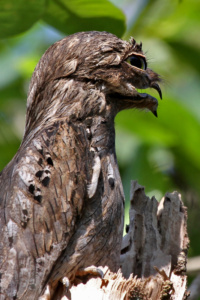
These birds are located in the humid forested areas of Central and South America, as well as in areas of Australia. They prefer the edges of the forest near open areas where food sources are more plentiful. They stay in their local habitat all year round and do not have any migratory cycles. They are monogamous. which actually puts them in danger. Some rural Brazilians hunt and kill Potoos for their feathers. They believe the feathers have the power to ensure chastity. Therefore, they hunt the Potoo for body parts used to perform ceremonies that will ward off seduction. At times, they actually will eat the bird, although there isn’t much meat.
Just take a look at this little fella. He almost looks like a Muppet with a large head and oddly placed eyes atop a slender body. 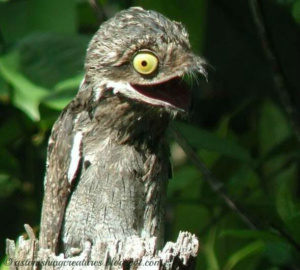 What do you think? If Cornell says it’s a bird, it is a bird. Seems he is a shy sort or creature and nocturnal on top of that. Chances of seeing him when you are up and about will be quite slim. During the daylight, the Potoo will be sitting straight and motionless blending right in with the tree. You might think it is a odd bump in the limb or a broken limb, as the color and patterning of feathers blends in with the bark of a tree extremely well. They only fly at night. Neither do they construct a nest. The bird simply lays claim to a tree branch as their home base. Potoos are all colored the same. There is no derivation between a female or male Potoo, as in most other species. You can not tell if it is the mother or the father tending to the nestling. They are quite solitary birds sticking only with their mate and nestling. Do not bother looking for flocks in the sky or groups gathered to feed. If you were not really paying particular attention, you would miss these birds completely.
What do you think? If Cornell says it’s a bird, it is a bird. Seems he is a shy sort or creature and nocturnal on top of that. Chances of seeing him when you are up and about will be quite slim. During the daylight, the Potoo will be sitting straight and motionless blending right in with the tree. You might think it is a odd bump in the limb or a broken limb, as the color and patterning of feathers blends in with the bark of a tree extremely well. They only fly at night. Neither do they construct a nest. The bird simply lays claim to a tree branch as their home base. Potoos are all colored the same. There is no derivation between a female or male Potoo, as in most other species. You can not tell if it is the mother or the father tending to the nestling. They are quite solitary birds sticking only with their mate and nestling. Do not bother looking for flocks in the sky or groups gathered to feed. If you were not really paying particular attention, you would miss these birds completely.
During the night hours, they perch on a specific branch and wait. They wait for an insect to fly by and dart out to snatch it. Returning to the same branch, it eats the insect and continues to wait for further bugs to pass on by. They do return each night to the same spot to lay in wait once again. They never land on the ground to seek food but stay in the trees or fly about for a catch. They eat beetles, katydids, moths, grasshoppers, termites and even known to eat small bats or birds. 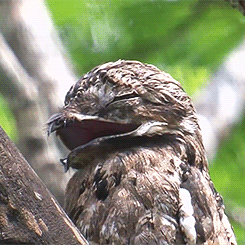 Yes, I bet he could swallow all that! Will not beat or crush their prey and swallow it whole. Probably wondering how big is the bird. The maximum size of a Potoo is approximately 1-1/2 pounds and 2 feet. The wing span can be a bit over 3 feet. Good size bird.
Yes, I bet he could swallow all that! Will not beat or crush their prey and swallow it whole. Probably wondering how big is the bird. The maximum size of a Potoo is approximately 1-1/2 pounds and 2 feet. The wing span can be a bit over 3 feet. Good size bird.
It is the dead of night and you are outside doing a little star gazing. Oh how serene and wonderful. The hum or crickets and katydids. WHAT WAS THAT– LISTEN! That was the Potoo bird. What a eerie unsettling call to be heard in the pitch of night. No wonder people think Bigfoot is around. Certainly not the sweet tweet and chirp of a robin is it.
As I mentioned earlier, nests are nonexistent. 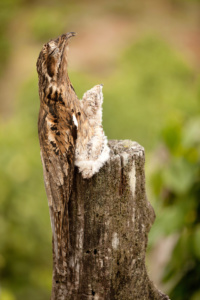 When it is time to lay eggs, they simply find a V in the tree limbs, a depression in a branch, or perhaps the top of a rotten stump to lay their one single egg. The egg is white with purplish brown spots.
When it is time to lay eggs, they simply find a V in the tree limbs, a depression in a branch, or perhaps the top of a rotten stump to lay their one single egg. The egg is white with purplish brown spots. 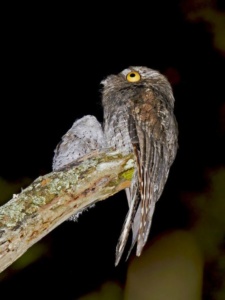 Potoos rely totally upon camouflage with method of nesting. During the day, the male incubates the egg and at night, male and female take turns. The bird want sot attract as little attention as possible so the incubation swapping is as infrequent as possible. The baby is incubated for a month and another two months before off on its own. Its plumage is white. Once the baby is no longer to hide under the plumage of its mother, it too recreates that stone-like stance as the parents. They are an extremely sedentary species. In fact, they have sedentary perfected.
Potoos rely totally upon camouflage with method of nesting. During the day, the male incubates the egg and at night, male and female take turns. The bird want sot attract as little attention as possible so the incubation swapping is as infrequent as possible. The baby is incubated for a month and another two months before off on its own. Its plumage is white. Once the baby is no longer to hide under the plumage of its mother, it too recreates that stone-like stance as the parents. They are an extremely sedentary species. In fact, they have sedentary perfected.
Oddities abound upon the face of the planet and this is merely one of them. When I first laid eyes on this bird, I thought it was ugly, scary, and most likely very dangerous. After reading and reporting so much about him, I think he very cute and courageous creature. Just misunderstood.
“Nature is a mutable cloud which is always and never the same”
― Ralph Waldo Emerson
Take the time to look and discover nature. All around and everywhere, there appear to be oddities or are they? Maybe we are the oddities.
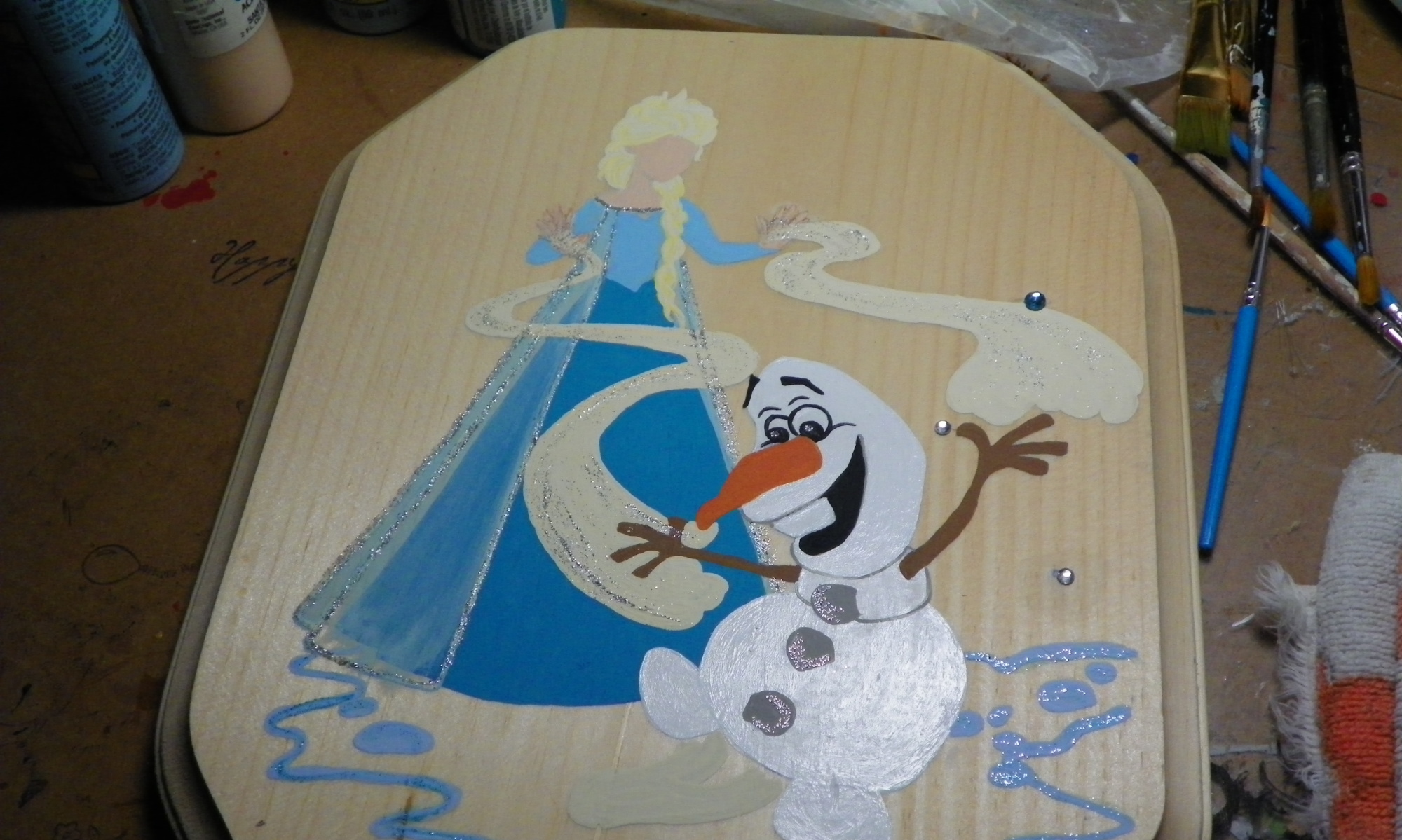


Highly energetic blog, I liked that bit. Will there be a part
2?
As I come across things, I post about them. That bird just intrigued me.